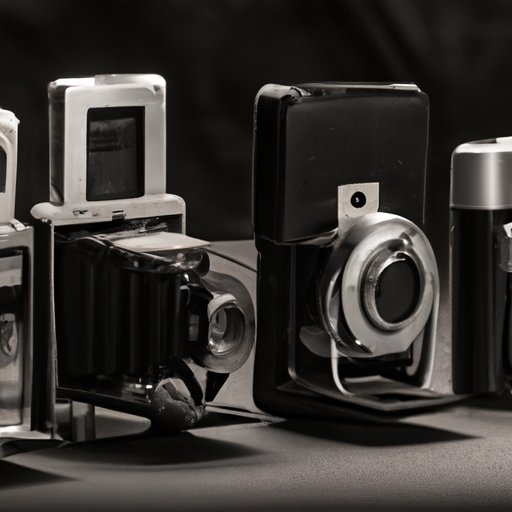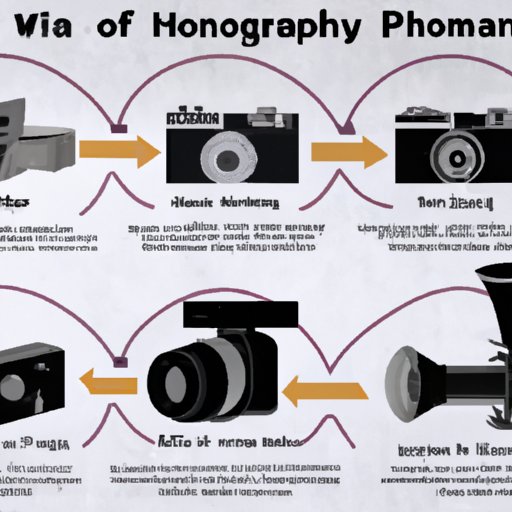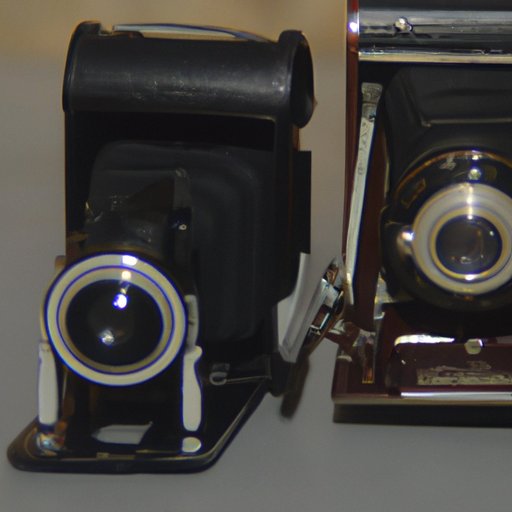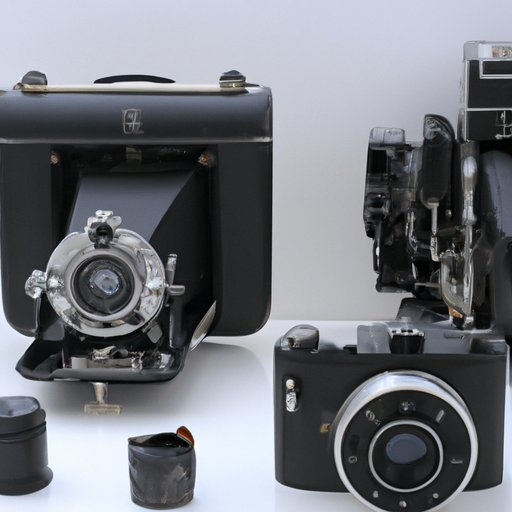Introduction
A camera is a device used to capture still images or video footage. It’s an essential tool for photographers, filmmakers, and other visual artists. But when was the camera first invented? How has it evolved over time? This article will explore the history and evolution of the camera, from its early concepts to modern digital devices.
Historical Overview of the Invention of the Camera
The concept of a “camera” has been around since ancient times. Aristotle wrote about the idea of a pinhole camera in 350 BC, and Chinese philosopher Mozi described a similar concept in the 5th century BC. Through the centuries, various scientists and inventors experimented with ways to capture and reproduce images using light.
In the 16th century, Italian scientist Giambattista della Porta developed the camera obscura (Latin for “dark room”). This device was a small room with a hole in one wall, which allowed light to enter and project an inverted image on the opposite wall. The camera obscura became popular among painters and was used as an aid for creating realistic artwork.
Over the next few centuries, refinements were made to the camera obscura, such as adding lenses and shutters. In 1816, French inventor Joseph Nicephore Niepce created the first camera photograph. He used a camera obscura and a pewter plate coated with bitumen, which hardened when exposed to light. This process, known as heliography, was the first successful attempt at capturing a permanent image.

Exploring the Evolution of the Camera Through Time
In 1839, Louis Daguerre invented the daguerreotype, the first commercially viable form of photography. His process used an iodine-sensitized silver plate that was exposed in the camera and developed in mercury vapor. The resulting image was a highly detailed, positive print on a silvered copper plate.
William Henry Fox Talbot then developed the calotype process, which used paper treated with silver chloride. This process allowed multiple prints to be made from a single negative. This opened up the possibility of mass-producing photographs.
As technology advanced, so did the capabilities of the camera. By the end of the 19th century, cameras could take pictures in color, use faster shutter speeds, and even produce moving images. With the advent of digital photography in the 1990s, cameras became more affordable and accessible. Today, camera technology continues to evolve, with new features such as automatic focus, built-in flash, and high-definition video.

A Timeline of Camera Creation: From Early Concepts to Modern Devices
Let’s take a look at a timeline of camera creation, from its earliest concepts to modern digital devices.
Pre-1800s: Early Concepts and Experiments
• 350 BC: Aristotle writes about the concept of a pinhole camera.
• 5th century BC: Chinese philosopher Mozi describes a similar concept.
• 16th century: Italian scientist Giambattista della Porta develops the camera obscura.
1800-1900s: Developments in Camera Technology
• 1816: French inventor Joseph Nicephore Niepce creates the first camera photograph.
• 1839: Louis Daguerre invents the daguerreotype.
• 1840: William Henry Fox Talbot develops the calotype process.
• 1888: George Eastman introduces the first commercially available film camera.
• 1900: The Brownie camera is released.
1900-Present: Digital Cameras and Beyond
• 1975: Sony releases the first consumer-grade video camera.
• 1990: Kodak releases the first commercially available digital camera.
• 2000: The first mobile phone with a built-in camera is released.
• 2009: The first DSLR camera with full HD video capabilities is released.
• 2019: Google releases the Pixel 3, the first smartphone with Night Sight mode.

How the Invention of the Camera Changed Photography
The invention of the camera revolutionized the way we capture and view images. Before its invention, portrait paintings were expensive and time-consuming to create. With the introduction of the camera, however, it became possible to quickly and affordably capture a person’s likeness.
Documentary photography also flourished after the invention of the camera. Photographers could now capture candid images of people and events, allowing them to tell stories through their images. This led to the growth of photojournalism, which soon became an important part of news media.
Finally, the invention of the camera opened up new possibilities for artistic expression. Photographers began experimenting with composition, light, and other elements to create images that evoked emotion and told stories. This paved the way for the development of photographic art.
The Pioneers Behind the Invention of the Camera
Three key figures played a major role in the development of the camera: Joseph Nicephore Niepce, Louis Daguerre, and William Henry Fox Talbot.
Niepce was the first to capture a permanent image using a camera. His heliographic process used a camera obscura and a pewter plate coated with bitumen, which hardened when exposed to light. While his invention was revolutionary, it wasn’t commercially viable.
Daguerre then created the daguerreotype, the first commercially viable form of photography. His process used an iodine-sensitized silver plate that was exposed in the camera and developed in mercury vapor. The resulting image was a highly detailed, positive print on a silvered copper plate.
Finally, Talbot developed the calotype process, which used paper treated with silver chloride. This was the first process that allowed multiple prints to be made from a single negative. This opened up the possibility of mass-producing photographs.
Examining the Impact of the Camera on Art and Culture
The invention of the camera had a profound impact on art and culture. Portraits became more accessible and widespread, allowing people to capture and preserve memories. Documentary photography began to tell stories and shed light on social issues. And photographic art pushed the boundaries of traditional art forms, creating new possibilities for creativity.
Today, the camera remains an essential tool for photographers, filmmakers, and visual artists. Its invention has allowed us to capture moments, tell stories, and create works of art like never before.
Conclusion
The invention of the camera has revolutionized the way we capture and view images. From its early concepts to modern digital devices, the camera has come a long way in its development. Pioneers such as Joseph Nicephore Niepce, Louis Daguerre, and William Henry Fox Talbot played a major role in its invention, and their work has had a lasting impact on art and culture. The camera has become an invaluable tool for photographers, filmmakers, and visual artists, and its legacy continues to this day.
(Note: Is this article not meeting your expectations? Do you have knowledge or insights to share? Unlock new opportunities and expand your reach by joining our authors team. Click Registration to join us and share your expertise with our readers.)
